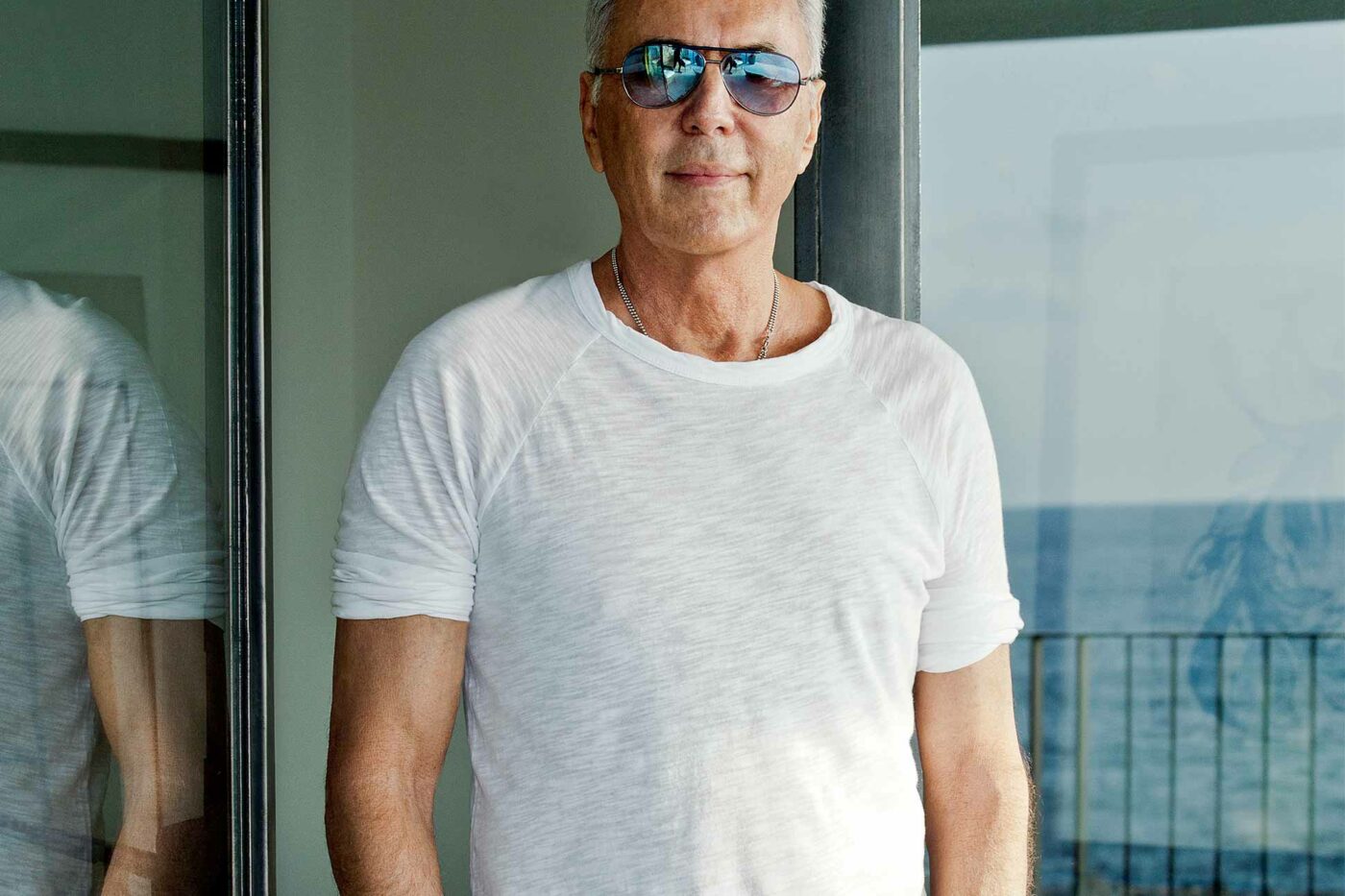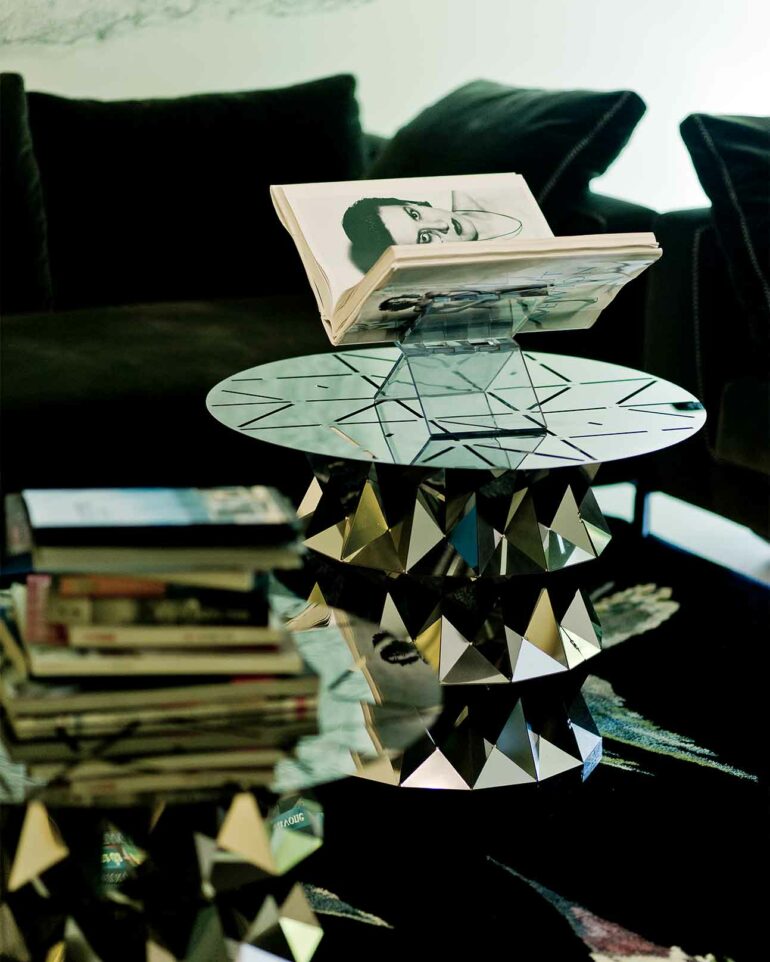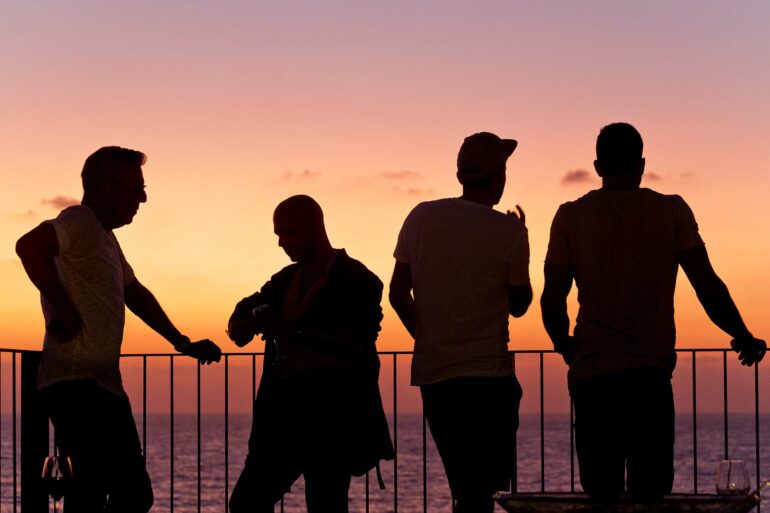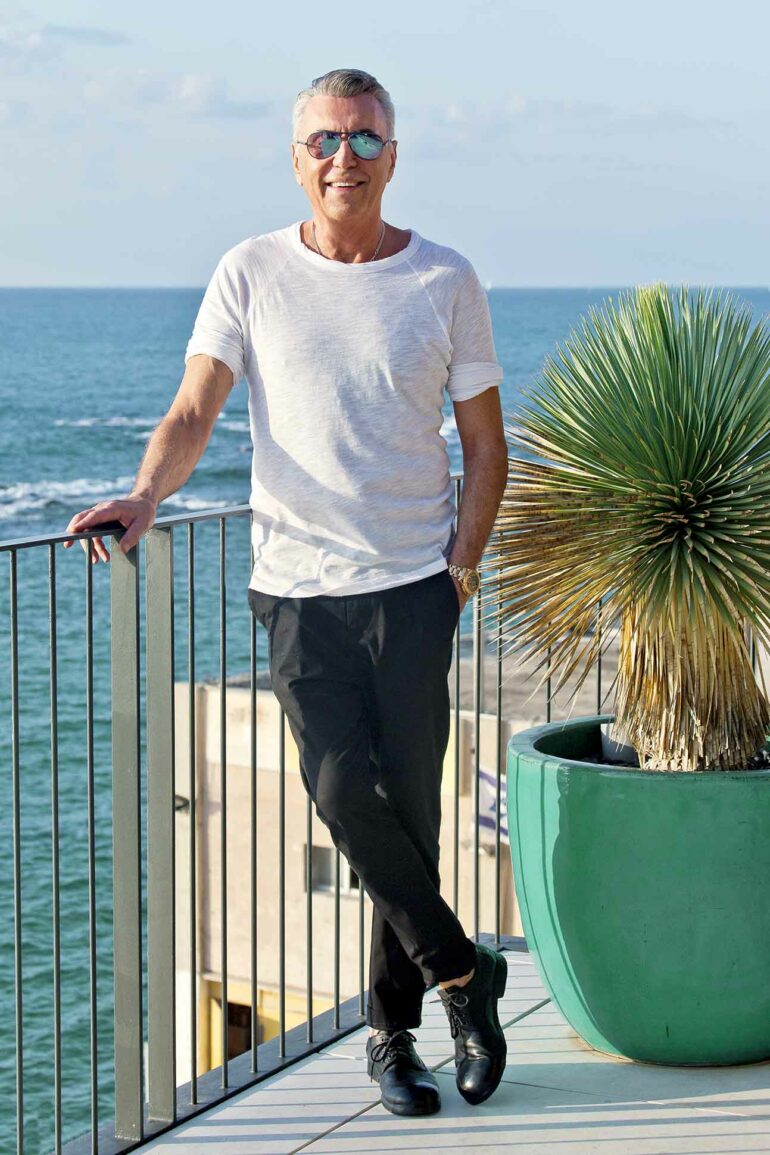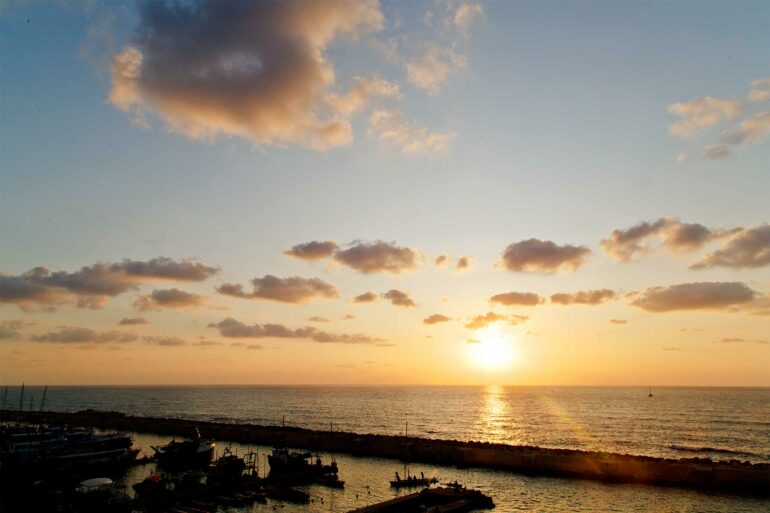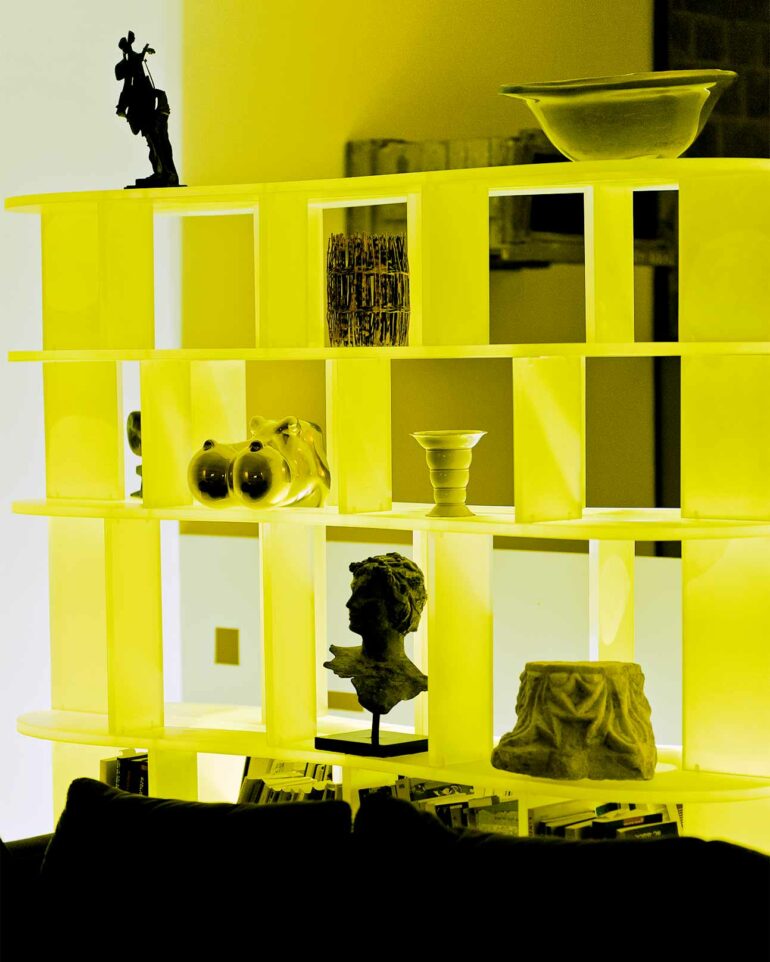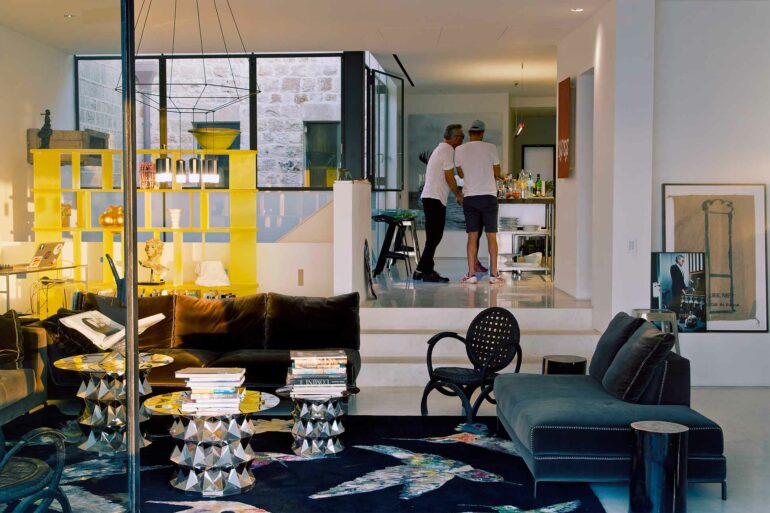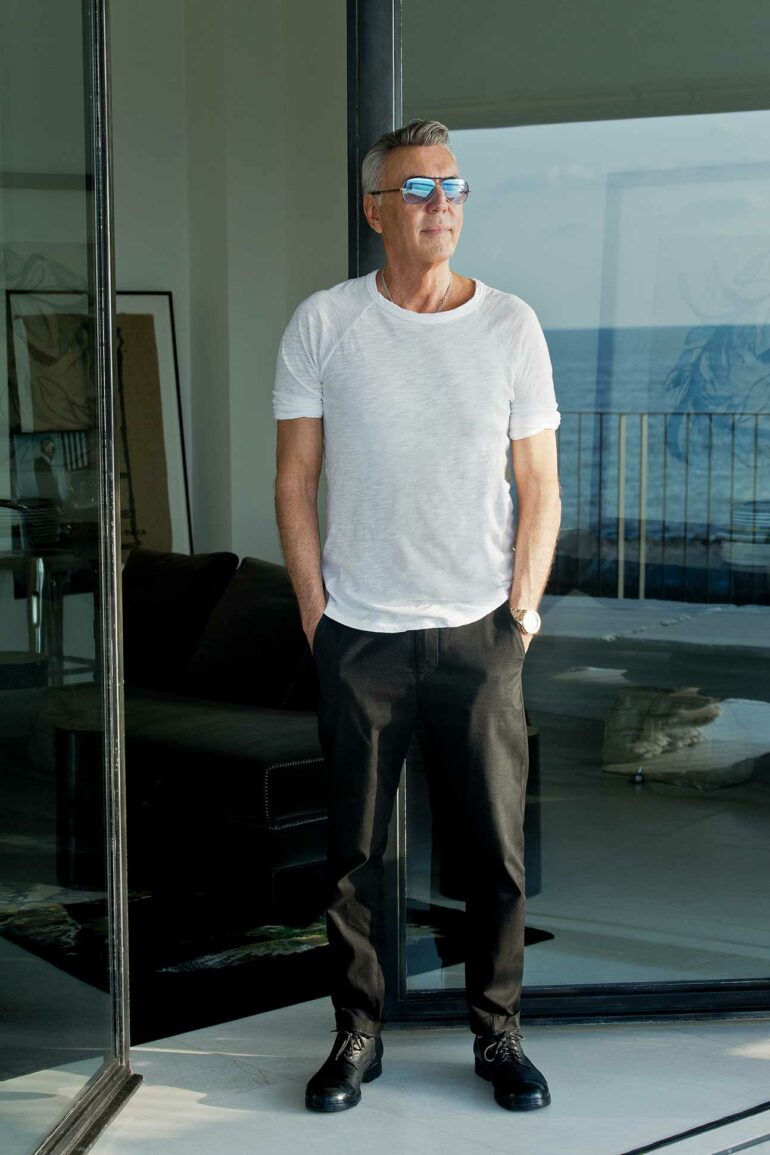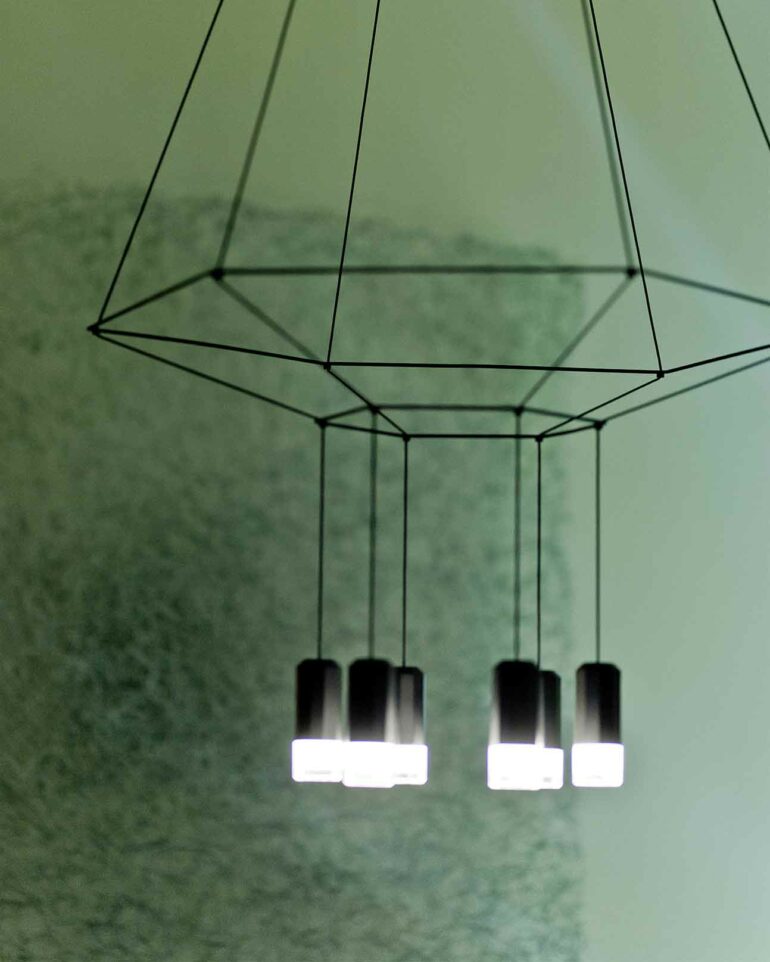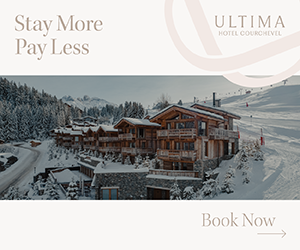One of Israel’s most acclaimed architects, Ilan Pivko has had a direct hand in the regeneration of Tel Aviv since the 1980s, but he’s far from done.
It is 10pm on a Tuesday evening, the streets have cooled down a few degrees making the 20-minute walk south from Rothschild Boulevard to Florentin bearable. I follow my new acquaintance, Elad Mintzer, who has taken it upon himself to show me around, through an innocuous industrial building into a large courtyard, buzzing with atmosphere. Bearded, casually-dressed waiters, indiscernible from the bearded, casually-dressed punters, swish around tables taking orders. I feel like I’ve somehow sidestepped 2,000 miles to Berlin.
As we take our seats, Elad makes a call and seems to be giving instructions in Hebrew. A few minutes later, we are joined by a well built, tanned, elegant man wearing an immaculate, fitted, white t-shirt and despite the late hour, a pair of designer sunglasses, like a combination of a 50-something gym-honed Giorgio Armani and a mature rock and roll singer.
“This is Ilan,” introduces Elad. I stand and take the man’s open hand, his broad smile revealing a set of perfect white teeth. We exchange the usual pleasantries as we’re joined by two more equally handsome, younger men. The conversation flows around the table in the way that I’ve been accustomed to since my arrival – switching confusingly between English and Hebrew. It transpires that my present company is a mix of some of Tel Aviv’s key players. The Marketing Director of the country’s leading gay website and app Atraf, the founder of the networking platform Gay Tech, the Editor of the country’s top Technology magazine and one of the country’s pre-eminent architects, Ilan Pivko.
After a few drinks, we are at that point in the evening where you either move on to another bar or club or make your way home. Being in Tel Aviv we, of course, choose the former. Finally, around 1am I make my excuses, but not before accepting various invitations from the group, including one from Ilan to visit him at his home the old town of Jaffa the following evening.
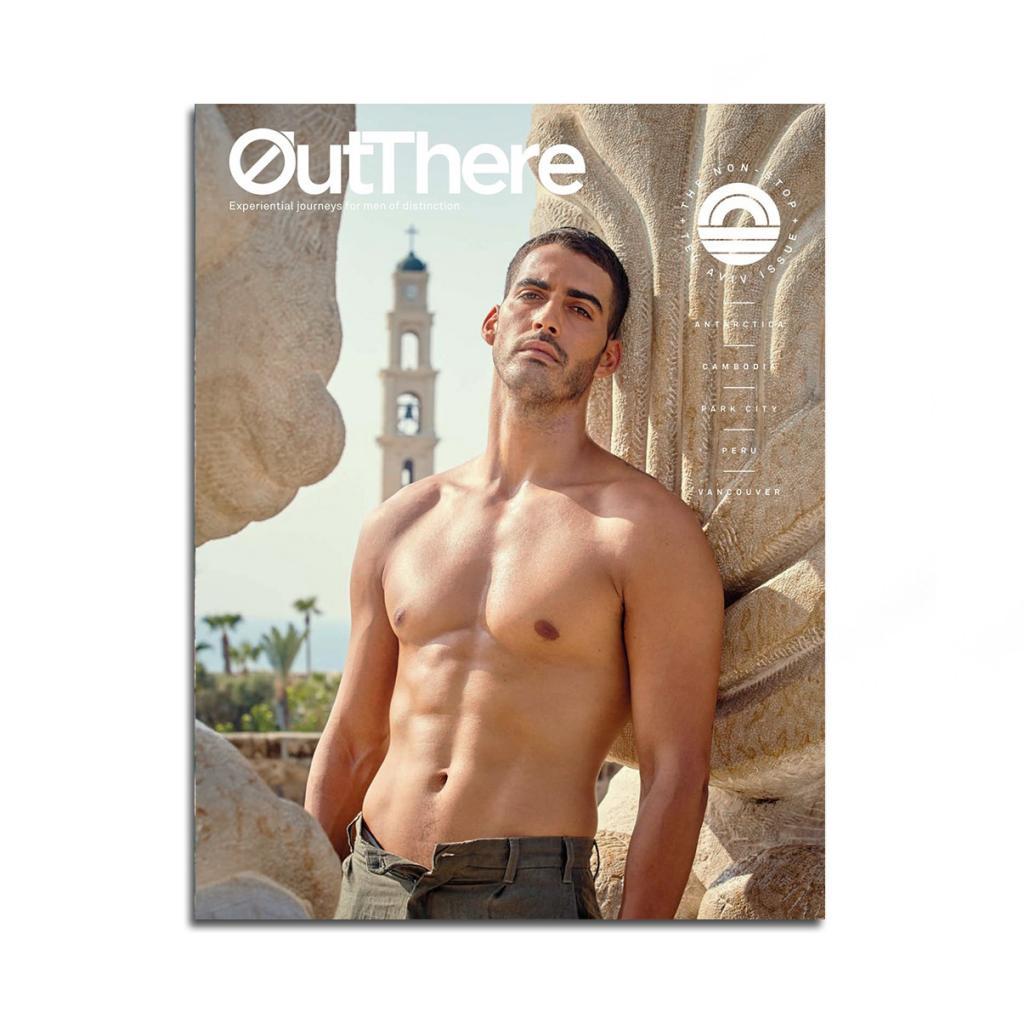
This story first appeared in The Non-Stop Tel Aviv Issue, available in print and digital.
Subscribe today or purchase a back copy via our online shop.
The doors of Ilan’s private lift open to reveal an airy, open-plan, split-level space. The entire end wall is glass, framing an expansive balcony and the jaw-dropping view of the Mediterranean beyond. It’s a little theatrical moment, intended to impress. I try to keep my cool but fail miserably, gushing praise and one too many “wows”. If Tom Ford had a cave it would look like this. The place is both modern and primal, achingly cool with the vibe of a Bond villain’s luxury hideaway. The sea wafts through the massive open doors. A striking, ten-foot-long table made entirely of layered, raw-edged, slate grey marble dominates the balcony. The sitting room is dressed with designer furniture, pieces of art and stacks of heavy coffee table books. Thankfully my host is no Goldfinger; he’s more interested in keeping my wine glass topped up and entertaining me with stories than cutting me in half with a laser. Although I doubt his muscle-bound Brazilian companion – who is unsubtly making his presence felt – would have much trouble holding me down if he did.
“It was a ruin,” Pivko says of the building, whilst pushing his sunglasses back onto the bridge of his nose. “I had one floor and some old rooms back here. I took it and I made six apartments. We have relics from a Byzantine port, parts of the old walls of Jaffa. There’s a sign that says it was donated to the Armenian Church in 1556.” Creating the place was a labour of love, a process made slower by the need to respect the history of the raw materials they were working with and the location. But it was undeniably worth the wait. “The sensation of living with such old walls, new and old together, is so exciting. This is the closest place to live by the sea in Israel. Plus it’s a port, so boats are coming in and out. You’re part of the action.”
Jaffa is one of my favourite parts of the city with its old market atmosphere and air of crumbling, Arabic and Ottoman majesty. By night it’s full of party-mad, beautiful revellers wearing very little. It’s enough to cause whiplash.
“I have a vacation every weekend here,” Ilan says with a grin. “It’s a 24-hour party city, but small enough to walk. It’s very safe.”
This wasn’t always the case; he points out. He paints a vivid picture of Tel Aviv in the eighties. Fun but run-down. Bombarded and falling apart.
The eighties was also when Tel Aviv took on the moniker ‘The White City’ after a retrospective exhibition framed it as a bastion of Modernism, with the highest concentration of buildings in the ‘International Style’, in the world. ‘The White City’ became shorthand for the image that Tel Aviv presented to the world: progressive, secular, egalitarian and liberal; a narrative presented to me a few days earlier at the city’s Bauhaus centre.
“I have a vacation every weekend here,” Ilan says with a grin. “It’s a 24-hour party city, but small enough to walk. It’s very safe.”
Before setting out into the searing midday heat armed with headsets and a map of key Modernist buildings, our small group of enthusiastic architecture fans huddled around a TV in the basement of the centre watching a short film. The narration played over archive footage detailing a brief story of how Jewish émigrés left the overcrowded Jaffa in the early 20th century and created a shiny new neighbourhood called Tel Aviv (The New Spring) a mile or so further up the coast. The Scottish engineer Sir Patrick Geddes was charged with planning the infrastructure of the garden suburb but didn’t specify any particular style to architects. Tel Aviv’s first buildings were unremarkable, Neo-Classical buildings reflecting an aspirational, middle-class, European sensibly.
Following the rise of the Nazi party, a large number of Jewish intellectuals including young architects, schooled in Bauhaus theory, left Germany to find a new home in Tel Aviv. It was a clean slate both culturally and architecturally; and they set to work applying their beloved Modernist principles. The two things, the narration implied, were made for one another; a modern architectural aesthetic for a brand new city, free from the constraints of historical meaning, and a design aesthetic which employed simplicity and looked for ways to economically make use of readily available, low-cost materials. They adapted everything they knew to the Middle-Eastern climate, in the days before air-conditioning; large balconies, west-facing living rooms and east-facing bedrooms meant the occupants could avoid the heat of the sun as it moved across the sky. The buildings were painted white to reflect as much of the sun’s heat as possible.
“In the hands of the city’s founding fathers, 4,000 gleaming white modern buildings fit for the 20th century arose from the barren sands of the desert.”
By the time the eighties rolled around, the city had developed and changed beyond recognition; and the original generation who built the city were gone.
“Everyone from the centre of Tel Aviv died, pretty much at the same time,” Pivko tells me while pouring us another glass of chilled Chardonnay that he’d just pulled from his large designer fridge. He tops them up with a generous drop of Campari. “They had come here a hundred years ago in their twenties and then died. The city was left empty. So then it became really cheap. This encouraged young people to move back and they started having fun, creating clubs.”
This new blood – Pivko’s and his peers – were young Post-modernists unbound by the strict rules of the past. With a lust for life and an anything-goes attitude, they turned the area around Shenkin Street into a world-famous, 24-hour party hotspot akin to London’s Soho, except with al-fresco weather.


